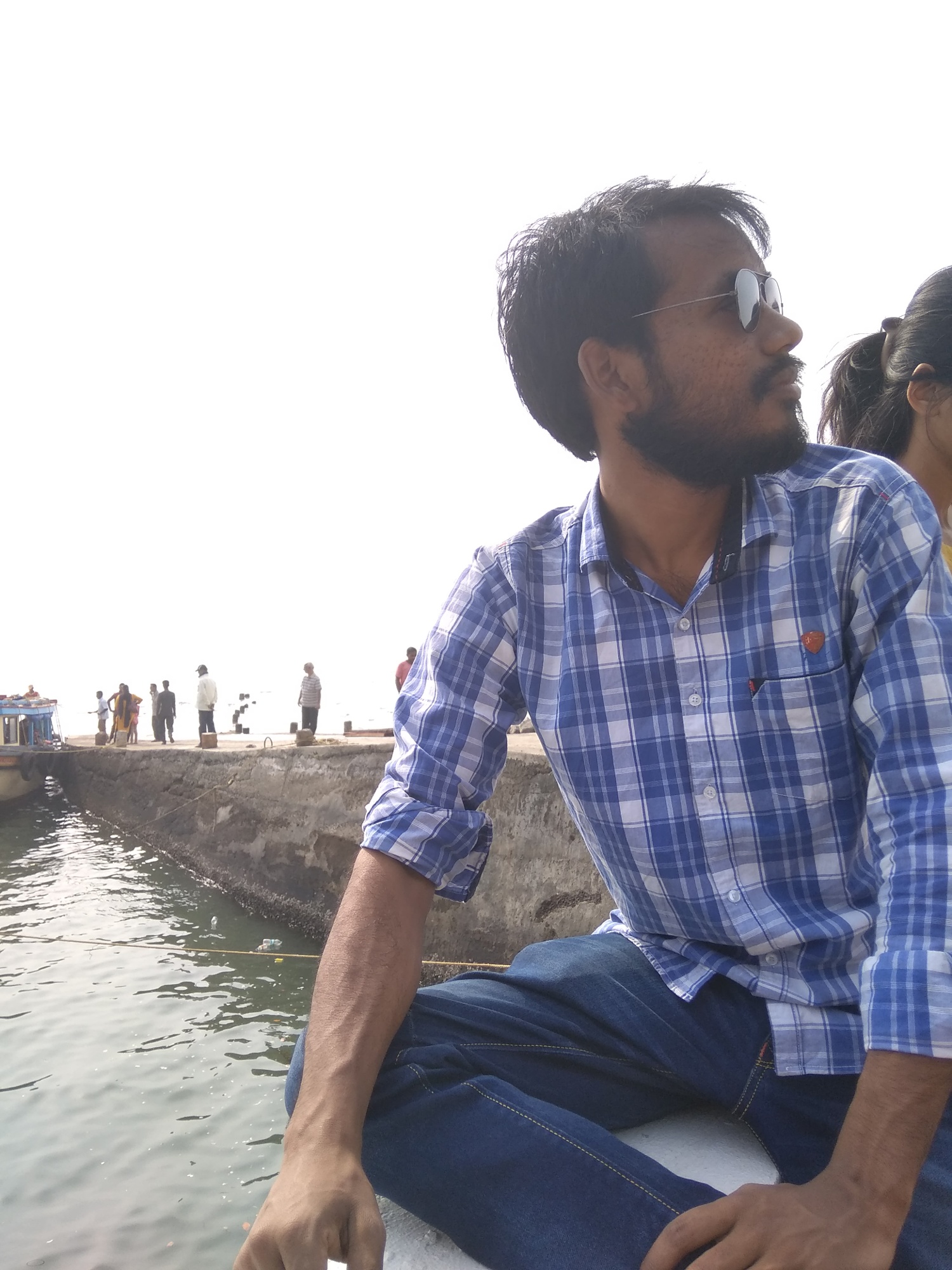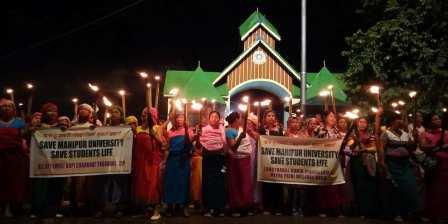Dr. Sunil Abhiman Awachar
 [Recently, the painting exhibition of Dalit artist/painter Dr. Sunil Abhiman Awachar was held in February 2016 at the ‘International Conference on Voices of the Oppressed and the Marginalised’ in Mehsana, Gujarat. It was organised by the Social Justice Department, Government of Gujarat, and ICSSR, New Delhi. The title of his painting exhibition was ‘Paintings of Dalits’. His paintings were appreciated by many guests, some of whom came from Germany and Austria. In this conference, Dr. Sunil Abhiman Awachar spoke about his journey to become an artist and how from his Dalit background, he grew as an artist of the people.
[Recently, the painting exhibition of Dalit artist/painter Dr. Sunil Abhiman Awachar was held in February 2016 at the ‘International Conference on Voices of the Oppressed and the Marginalised’ in Mehsana, Gujarat. It was organised by the Social Justice Department, Government of Gujarat, and ICSSR, New Delhi. The title of his painting exhibition was ‘Paintings of Dalits’. His paintings were appreciated by many guests, some of whom came from Germany and Austria. In this conference, Dr. Sunil Abhiman Awachar spoke about his journey to become an artist and how from his Dalit background, he grew as an artist of the people.
This write up illustrates his journey as a Dalit, as an artist, and poet and conveying the issues of his people through his art.]
I have been interested in paintings and poems, ever since I was a child. I remember that while I was in third or fourth standard, during summer vacations, I used to visit my maternal uncle’s village. My maternal grandmother Sakhrabai loved me immensely and would fulfill all my demands. She would bring white mud from the Deshmukhvada (house of the upper caste landlord) and paint the walls of the house with it. Hand-painted-white-walls became my canvas and the ‘black charcoal’ became my chalk. With such walls, my journey of painting began. The economic conditions of the family made it impossible for me to afford colors and canvas. Then, my heart would be filled with a tinge of jealousy and envy towards people who could afford them. Such kind of unfulfilled desires resulted in me being sensitive to my surroundings. The mind of this innocent child awoke to an insatiable desire to understand nature, human beings, society, literature etc.
My father served in the police department hence, he used to be transferred to different places. It was as if he was a snail, carrying its home on its back, all the time. These transfers gave me an exposure to different kinds and varieties of people. It would be difficult for us to get a house on rent. Since the police quarters would often remain full, we had to hunt for houses. Discussions would center on the theme that since ‘we belong to a lower caste’ people would not rent out to us. Again, an innocent mind would get anguished and beg for an answer to the question: why do people treat us in such a manner?
Once it so happened that in one such village where my father was transferred, my mother went to draw water from the well which belonged to upper caste people. Upper caste people not only discussed that ‘an untouchable woman’ has the audacity to draw water from the well but they also stopped using the well. My life is full of such incidences where ‘caste’ became firmly engraved/ stamped on my mind. On other occasions, people, before befriending me, would ask my ‘surname’ (last name). Though I may have migrated from a rural to an urban area, ‘caste’ has not yet left me! The venom of ‘caste’ is being felt by me in every step that I undertake and my colors and sketches speak the pain which I am suffering from.

Dr. Babasaheb Ambedkar’s statue, often found pointing with one finger rose towards the blue sky, and holding a copy of Constitution in his other hand, constantly inspires me. My grandfather was one of the volunteers in Dr. Babasaheb Ambedkar’s movement. He used to say to us, ‘ Babasaheb is the leader of our movement, he was a human being par excellence, had he not been there, we would not only be treated like dogs and cats but would have also died like them..” At our home, the song ‘the slaves have become free’ would be played on cassette. I would hum this song and it would remind me of the history of the struggles of Dalits – ‘Chavadar lake’, ‘the burning of Manusmriti’, ‘entry to Kalaram Temple’, and ‘the conversion to Buddhism’ etc.
I remember that as members of a Morcha we would travel to Mumbai’s Azad Maidan either by train or bus, free of cost. I would try to encapsulate the city of Mumbai in my eyes. The skyscrapers, foot paths, big roads and the cars speeding on them, slums at Dharavi, the local trains, the people rushing from pillar to post to fulfill the pangs of hunger, all these suffocated me. When I, for the first time, visited Jahangir Art Gallery (I was very afraid then) I felt that I should stay back to take my education from Mumbai but the family’s economic conditions stopped me from pursuing my goals and dreams.

I did not take formal education in fine arts through any institution. For me, my university was and still is about class – caste – color – gender discrimination and I revolted against all such discriminations. In my village, there was a Kumbharvada (place where the potters reside); the potters would carry out the work of sculpting and coloring. I would stand at a distance and observe everything. The village would be visited by touring talkies. During those days, the posters of films would be painted. I would stand at a distance and would watch and observe for hours. I would try to understand painting from my perspective. If I attempted to paint, I would be scorned at. I would be pained. Yet, there were a few positive things too taking place meanwhile. My first poem and painting was published in Dalit literature movement’s mouthpiece ‘Asmitadarsh’, which used to get published from Aurangabad. Over the course of time in Dalit- Adivasi- Bahujan Samaj conferences, I started reading my poems. One such poem I am rendering below.
BPL Wheat : Neither Allows us to Live nor Makes us Die
Is there any one
Who intends to experience the terror
Of the word ‘untouchable’?
Just do this once:
Be a salesman and go on knocking
Door after door in a VIP colony
‘Beware of Dogs!’
‘Salesmen not allowed!’
Go on reading boards
The faces of girls in search of customers in
Red light area/ Become numbed.
Back to footpath in the night
Let us cover the shivering body with ragged blanket
Peep at a public toilet without stifling a nose
Try to sow a roti-sized infertile land on irrigation
Wash utensils like a maid-servant
And work even as a bonded labourer in a mansion
Take a loan from money-lender on compound interest
Borrow a cup and saucer for guests from the neighbour
Make a without-ticket journey from a Reservation Bogey
Resulting in humiliation by the T.C.
And if this is not enough / just mention your caste as
Buddha, Bhangi, Dhor, Pardhi
And try to propose to a high-class girl.
Kundan Shahare says, I can put me on flame
In the Parliament House for our demands
But I want to live
A leader proclaims “Even the same injustice to all
Could not keep us intake.”
We are not skilled in event management
Or we would have succeeded in
Propagating the message of ‘Youth for equality’
Desire to suppress the invalid and the unjust
But does not getting backing
And in the system we remain not even on waiting.
You think of revolutions / this is what they discuss in a cabinet
There remains absolutely no possibility
Of your getting a job
So please listen to the advice of a friend like me/ ‘Keep quiet’
And thus you will get what you want
Or everyone will go against you.
I try to converse with friends
But my outgoing calls are not allowed
And those to whom I crave for justice
Are out of coverage area.
No Spiderman descends to know my grief
Magical Harry Potter never speaks of our problems
No American satellites spy on our huts
And BPL Wheat: Neither allows us to live Nor makes us die.
In today’s globalized era, cultural changes have begun to take place. There is celebration of capitalism and standardization of culture. Those who are able to gain benefits out of it are the ‘bulls’ and those who are unable to get anything out of it are the ‘undernourished’ people. An army of unemployed people is rising. Poverty has broken the backs of people. There is marketization of women. People are fragmented by labeling them differently: the minorities are branded as terrorists, the rights of adivasis on natural resources are being denied, the murder of Rohith Vemula etc

In short, feudalism and religion are dividing humankind on different parameters. In Maharashtra, we find that casteism has fragmented humanity, resulting in horrendous incidences such as Khairlanji. Vidharbha is being converted into a cemetery of farmers and peasants. Marathwada is facing acute shortage of water. The saffronisation of education can be seen through FTII. Dr. Pansare and Dr. Dabholkar’s murders show the victory of elements which do not want to see India as one united whole.
In such circumstances, sensitive artists get totally upset. Artists like me do not become submissive but demand and fight for justice. The medium of poems, paintings become strong allies of an artist to fight in such struggles. People ask me, “How many days will you draw the pictures of people who are exploited by casteism, economically weaker sections, and women subjected to sexual exploitation?” My answer to that is “until the caste system is not buried, women do not get empowered; I will use colours, lines and words to shake/challenge the foundations of society’.
~~~
Dr. Sunil Abhiman Awachar, well known as a poet and painter, is an assistant professor with the Department of Marathi in University of Mumbai. He is also a full time activist in dalit human rights movement. He has published four anthologies of poetry, all in Marathi; they are ‘Global vartamanachya kavita (2008)’ ‘Mi mahasattechya darashi katora gheun ubha rahanaar nahi,’ ‘Bravo! Fox minds of capitalist’ and ‘Poems of the occupied everything’. One of the anthologies of his poems has been translated into English as ‘Our world is not for sale’. His poems voice out political statements which demand social justice.










